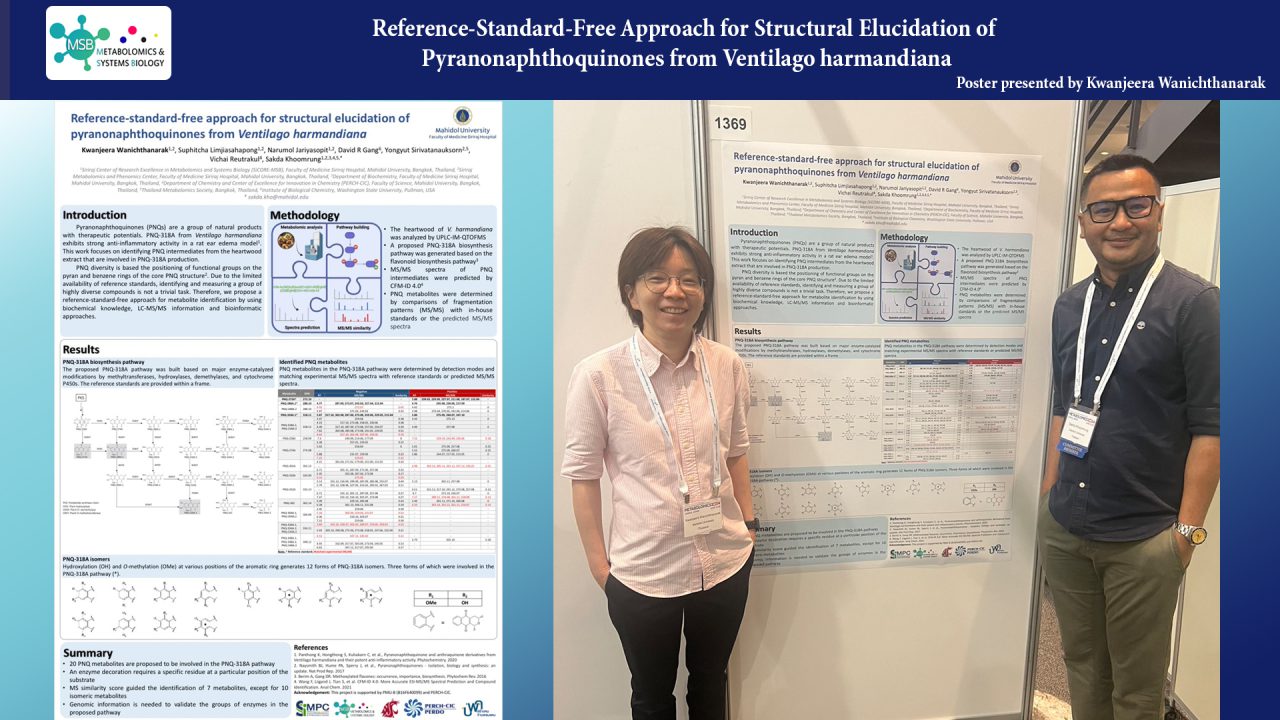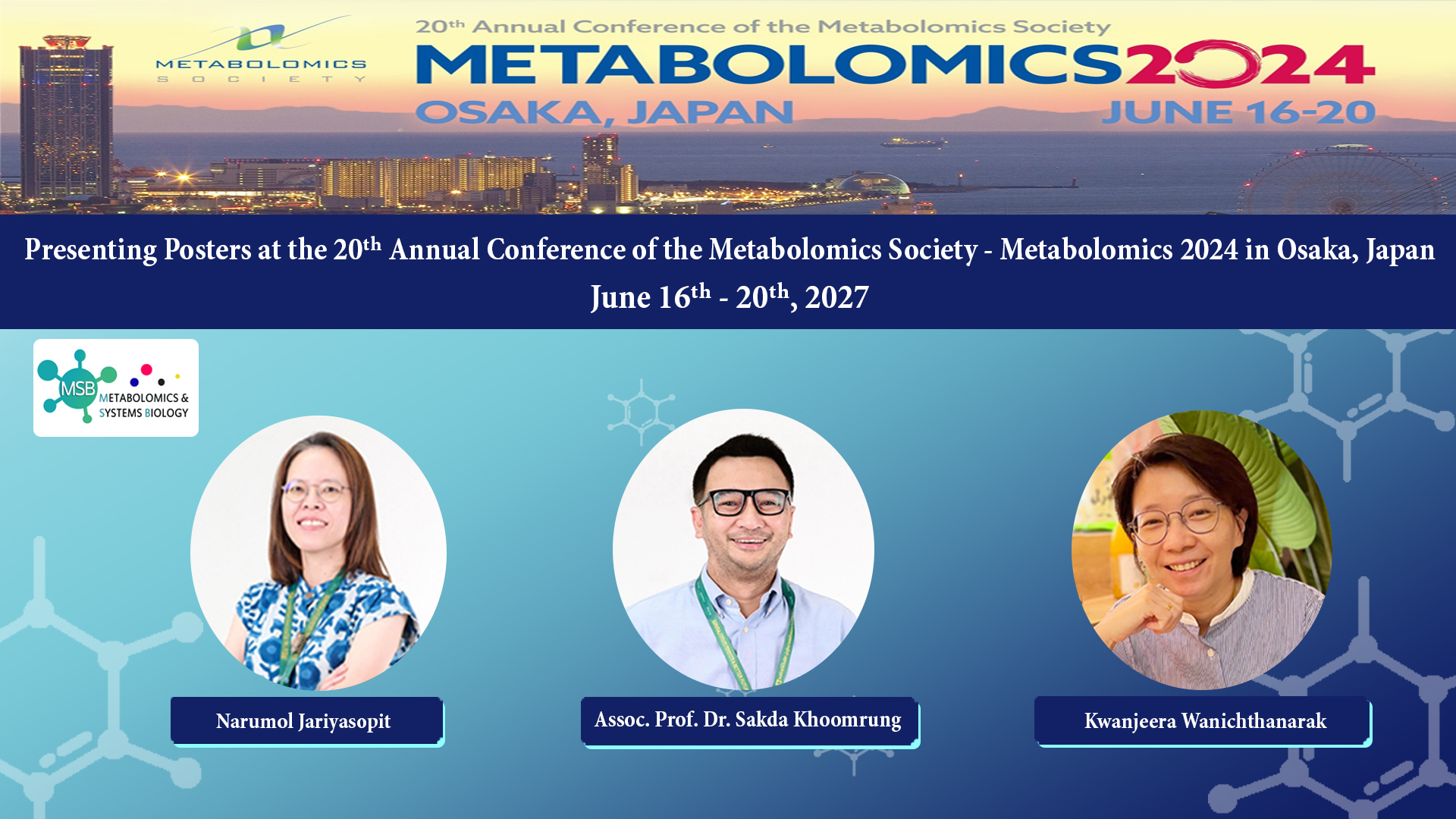Presenting Posters at the 20th Annual Conference of the Metabolomics Society – Metabolomics 2024 in Osaka, Japan, from June 16th to 20th, 2027.
Please join us in congratulating Narumol Jariyasopit, Kwanjeera Wanichthanarak, and Assoc. Prof. Dr. Sakda Khoomrung, from the Siriraj Center of Research Excellence in Metabolomic and Systems Biology (SiCORE-MSB), Faculty of Medicine, Siriraj Hospital, Mahidol University, for presenting posters at the 20th Annual Conference of the Metabolomics Society – Metabolomics 2024 in Osaka, Japan. https://www.metabolomics2024.org/session-schedule
4 Poster Presentations:
- Exploration of Gut Microbial Metabolites in End-Stage Renal Disease Patients Undergoing Peritoneal Dialysis vs Hemodialysis. Poster presented by Weerawan Manokasemsan
In this study, we developed and validated GC-MS and LC-MS/MS methods for quantifying 43 gut microbial metabolites, including 13 SCFAs, 13 SBAs, and 17 metabotoxins (UTs and AAAS), in fecal and plasma samples from ESRD patients. Our findings indicate that fecal gut microbial metabolite profiles of HC, PD, and HD were similar. However, plasma metabolites can distinguish HC from PD and HD groups. Indoxyl sulfate (IS), trimethylamine N-oxide (TMAO), hippuric acid (HA), phenyl sulfate (PS), and hydroxyhippuric acid (HHA) were major contributors to the clear separation among HC and ESRD. Our results suggest that the accumulation of gut microbial metabolites in plasma is significant in ESRD patients compared to feces, as 95% of metabolites enter the bloodstream, and only 5% are excreted through feces.
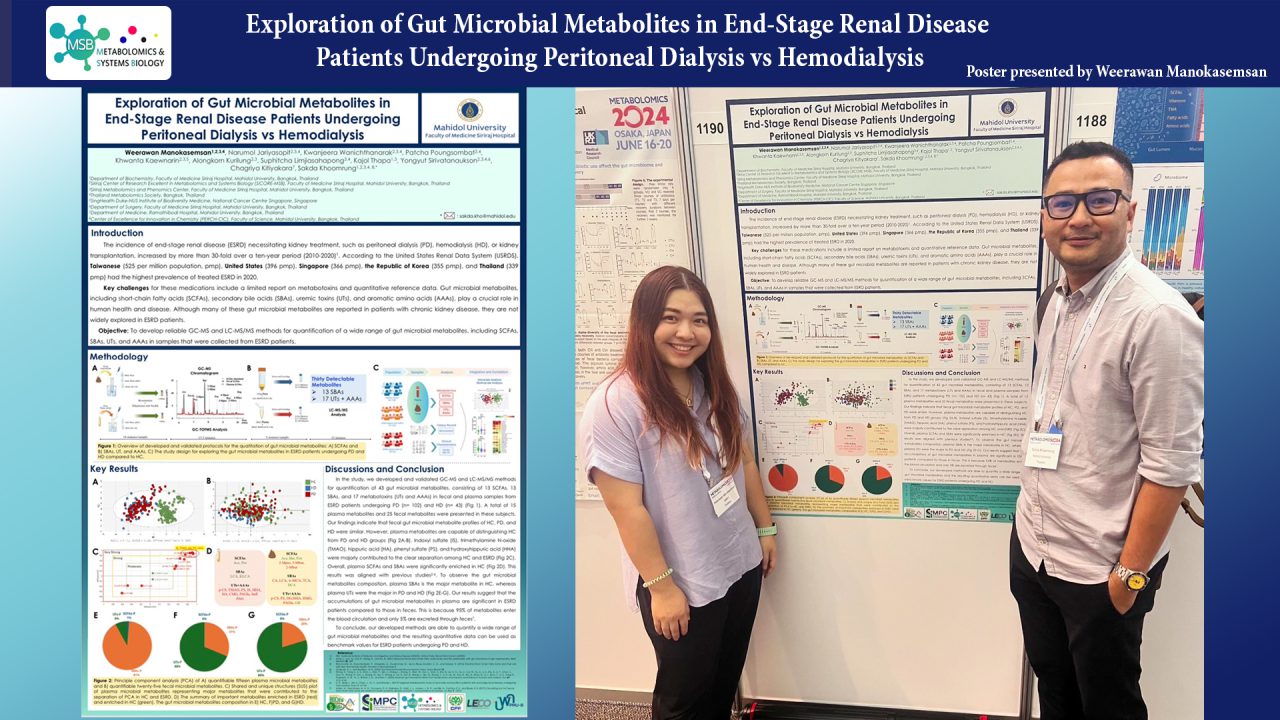
- Alterations of Metabolomic Profiles in Metabolic Syndrome Patients with Mild Cognitive Impairment. Poster presented by Narumol Jariyasopit
In this study, we provided absolute plasma concentrations of amino acids, total fatty acids, and tryptophan metabolites in the kynurenine pathway in treated MetS patients with and without MCI. We found that KTR has the potential to predict MCI in treated MetS patients, even after adjusting for age, sex, and BMI. Combinations of KTR + cholesterol and KTR + HbA1c could improve prediction performance. Increased KTR indicates inflammation due to increased IDO enzymatic activity with tryptophan. Our findings suggest that inflammatory activity is more prominent in MetS patients with MCI.
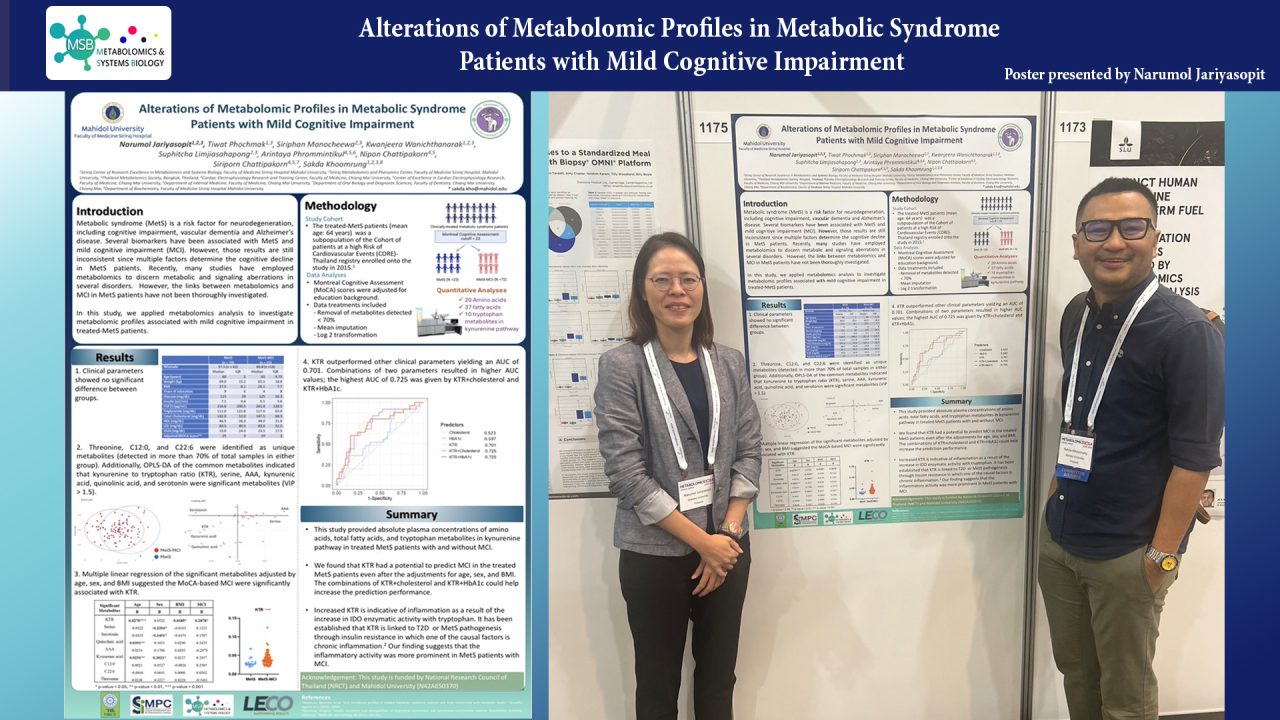
- Unveiling Odor Signatures: HS-SPME Analysis of Pitted Keratolysis (PK). Poster presented by Patcha Yanpirat
In this study, the HS-SPME arrow technique extracted 20 metabolites from socks, which were found to be elevated in the PK group. Short-chain fatty acids (SCFAs) such as acetic and propionic acids were identified among these. SCFAs are known to cause unpleasant odors (1). Comparing acetic acid concentrations between individuals with and without PK revealed higher levels in those with PK, likely due to differences in bacteria type, quantity, and prevalence among individuals. Further investigation into the correlation between SCFAs, bacteria, and other factors could improve disease identification.
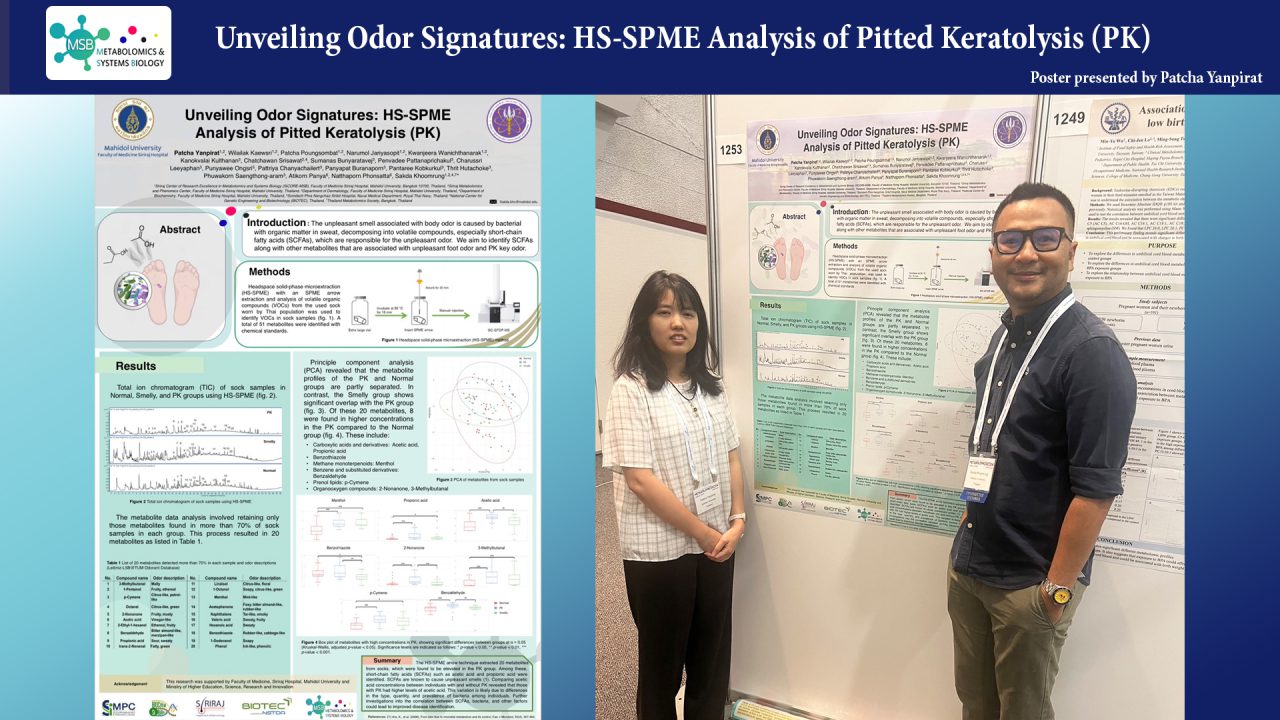
- Reference-Standard-Free Approach for Structural Elucidation of Pyranonaphthoquinones from Ventilago harmandiana. Poster presented by Kwanjeera Wanichthanarak.
In this study, 20 PNQ metabolites are proposed to be involved in the PNQ-318A pathway. An enzyme decoration requires a specific residue at a particular position of the substrate, and the MS similarity score guided the identification of 7 metabolites, except for 10 isomeric metabolites and Genomic information.
